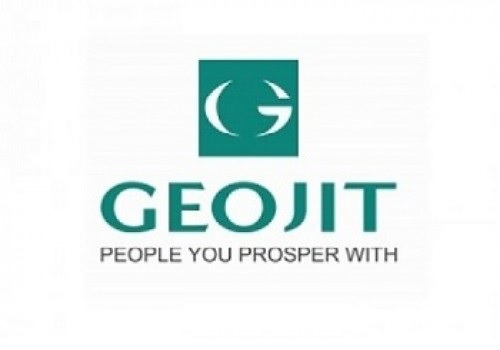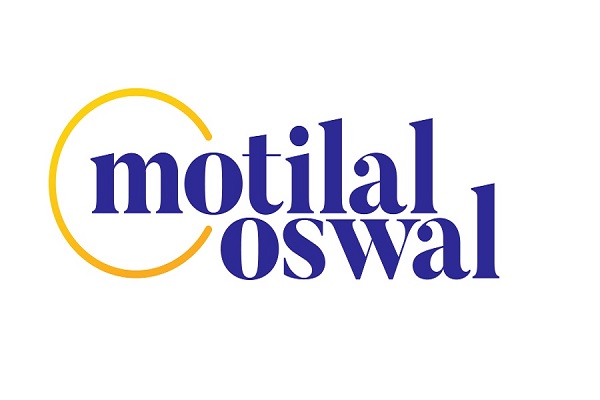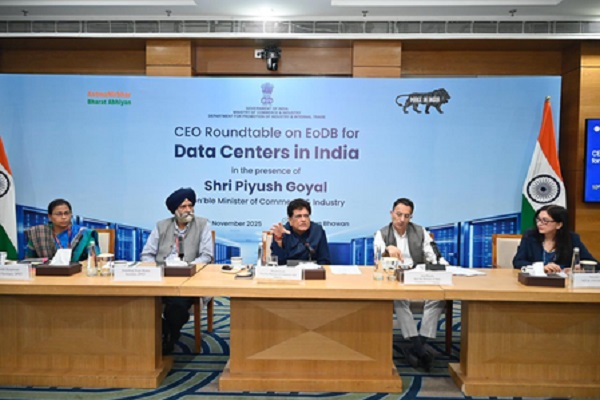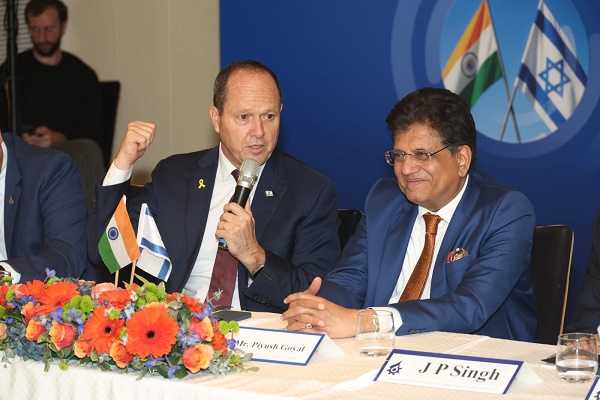Gallard Steel coming with IPO to raise Rs 37.50 crore

Gallard Steel
- Gallard Steel is coming out with an initial public offering (IPO) of 25,00,000 equity shares in a price band of Rs 142-150 per equity share.
- The issue will open on November 19, 2025 and will close on November 21, 2025.
- The shares will be listed on SME Platform of BSE.
- The face value of the share is Rs 10 and is priced 14.20 times of its face value on the lower side and 15.00 times on the higher side.
- Book running lead manager to the issue is Seren Capital.
- Compliance Officer for the issue is Pallavi Parihar.
Profile of the company
Incorporated in 2015, Gallard Steel is an engineering company engaged in the manufacturing of ready-to-use components, assemblies, and subassemblies for Indian railways, defence, power generation and allied industries. Its product portfolio includes critical components such as traction motor components and bogie assembly components for the railway sector, sub-assemblies for thermal and hydro turbines used in the power generation sector and components for industrial machinery, equipment and the defence sector. These components are manufactured using un-machined and machined castings made from metals including carbon steel, ductile iron, grey cast iron and medium and low alloy steels. Its clientele primarily comprises companies operating in the heavy engineering, railways and defence sector.
In the railway sector, the company supplies components for the production of traction motors and bogie assemblies, including control arms for FIAT LHB coaches, stator frames for various motors used by railways for manufacturing of traction motors serving the railway and heavy engineering industries. In the defence sector, it manufactures components such as cradles and recoiling assembly cylinders for government defence production units. In the power generation sector, it manufactures guide vanes, bush housings and fork systems for heavy engineering companies, which are used in hydro and thermal power generation. In components for industrial machinery and equipment, it manufactures High Temperature Resistance Liner and other components.
The company holds Class ‘A’ Foundry Status from the Research Designs and Standards Organization (RDSO), Ministry of Railways, confirming compliance with IS: 12117:1996 (Reaffirmed 2022). In addition, it has been approved by the competent authority under Indian Railways for capacity-cum-capability assessment to develop, manufacture and supply various critical components for electric locomotives and traction motors, including Suspension Tubes, Axle Boxes, Gear Cases, Axle Box housing and Control Arms. The company is also an approved vendor for supplying critical components for defense applications, including Cradle Assemblies and Steel Castings, as per specific technical requirements.
Proceed is being used for:
- Funding of capital expenditure towards expansion of its existing manufacturing facility and construction of office building
- Repayment of a portion of certain borrowings availed by the company
- General corporate purpose
Industry Overview
India is the world’s second-largest producer of crude steel, with an output of 125.32 million tonnes (MT) of crude steel and finished steel production of 121.29 MT in FY23. The growth in the Indian steel sector has been driven by the domestic availability of raw materials such as iron ore and cost-effective labour. India’s finished steel consumption stood at 119.17 MT in FY23, 138.5 MT in FY24 and 85.71 MT in FY25. India’s domestic steel demand is estimated to grow by 9-10% in FY25. Under the Union Budget 2023-24, the government allocated Rs 70.15 crore ($8.6 million) to the Ministry of Steel. India is home to fifth-highest reserves of iron ore in the world. The Indian steel industry is modern, with state-of-the-art steel mills. It has always strived for continuous modernisation of older plants and up-gradation to higher energy efficiency levels.
In the past 10–12 years, India's steel sector has expanded significantly. Production has increased by 75% since 2008, while domestic steel demand has increased by almost 80%. The capacity for producing steel has grown concurrently and the rise has been largely organic. In April-October 2024, crude steel production in India stood at 84.94 MT. In April-October 2024, finished steel production stood at 82.65 MT. In FY23, exports and imports of finished steel stood at 6.7 MT and 6.02 MT, respectively. In FY22, India exported 11.14 MT of finished steel. In April 2024 exports of finished steel stood at 5.1 lakh metric tonnes (LMT), while imports stood at 5.9 LMT. In FY24, the exports and imports of finished steel stood at 7.49 MT and 8.32 MT, respectively. By 2030-31, crude steel production is projected to reach 255 million tonnes at 85% capacity utilisation achieving 230 million tonnes of finished steel production, assuming a 10% yield loss or a 90% conversion ratio for the conversion of raw steel to finished steel. With net exports of 24 million tonnes, consumption is expected to reach 206 million tonnes by the years 2030–1931. As a result, it is anticipated that per-person steel consumption will grow to 160 kg.
The steel industry has emerged as a major focus area given the dependence of a diverse range of sectors on its output as India works to become a manufacturing powerhouse through policy initiatives like Make in India. With the industry accounting for about 2% of the nation's GDP, India ranks as the world's second-largest producer of steel and is poised to overtake China as the world's second-largest consumer of steel. Both the industry and the nation's export manufacturing capacity have the potential to help India regain its favourable steel trade balance. The National Steel Policy, 2017 envisage 300 million tonnes of production capacity by 2030-31. The per capita consumption of steel has increased from 57.6 kgs to 74.1 kgs during the last five years. The government has a fixed objective of increasing rural consumption of steel from the current 19.6 kg/per capita to 38 kg/per capita by 2030-31. Steel demand will grow by 7.2% in 2019-20 and 2020-21. Huge scope for growth is offered by India's comparatively low per capita steel consumption and the expected rise in consumption due to increased infrastructure construction and the thriving automobile and railways sectors.
Pros and strengths
In-house manufacturing facilities: The company operates from its manufacturing unit located at Plot No. 66, Sector-3, Industrial Growth Centre, Pithampur, Dhar, Madhya Pradesh, built on land area of 12,195 sq. meters, obtained on lease for 30 years from November 4, 2015. This facility supports melting, molding, casting, painting, finishing processes and machining which enables it to cater to various industry requirements. Additionally, its wholly owned subsidiary, Sleeploop India Pvt. Ltd. (SIPL), operates a machining facility at Plot No. 821, Sector-3, Industrial Growth Centre, Pithampur, Dhar, Madhya Pradesh, built on land area of 5,000 sq. meters, leased for 30 years from March 11, 2011. The integration of in-house casting and machining operations allows for better process coordination, improved production planning, reduced dependence on external facilities and streamline inventory management.
Diverse customer base: The company’s customer base spans multiple industries, enabling it to cater to a broad spectrum of requirements across key sectors. Its clientele includes entities in defence, power generation, engineering services, industrial solutions and railways, reflecting its ability to serve diverse sectors.
Stringent quality control mechanism ensuring standardized product quality: The company has implemented a stringent quality control system to ensure standardized product quality throughout the manufacturing process. Beginning with the inspection of incoming raw materials, such as steel scrap and ferroalloys, each material is carefully tested for specific chemical compositions using methods like spectrometer analysis, test certificates by suppliers and wet analysis to ensure they meet predefined specifications. The quality assurance process extends to every stage of production, with in-process inspections that include both destructive and non-destructive testing to detect any potential defects early on.
Risks and concerns
Significant revenue reliance on top clients: Substantial portion of its revenue has been dependent upon few customers with which it does not have any firm commitments. The company’s top ten customers for the six-month period ended September 30, 2025 and the financial years ended March 31, 2025, March 31, 2024 and March 31, 2023, accounted for 84.74%, 87.48%, 92.20% and 86.33% of its revenue from operations for the respective year/period. Its reliance on a limited number of customers for its business exposes it to risks that may include, but are not limited to, reductions, delays, or cancellation of orders from its significant customers, a failure to negotiate favorable terms with its key customers, or the loss of these customers, all of which would have a material adverse effect on the business, financial condition, results of operations, cash flows and future prospects of the company.
Exposure to local and environmental disruptions at manufacturing site: The company as well as its Subsidiary Company, Sleeploop India Private Limited, operates manufacturing facilities located at Pithampur, Dhar, Madhya Pradesh. Due to the geographical concentration of its manufacturing operations in Dhar district, its operations are susceptible to local, regional and environmental factors, such as social and civil unrest, regional conflicts, civil disturbances, economic and weather conditions, natural disasters, demographic and population changes and other unforeseen events and circumstances. Such disruptions could result in the damage or destruction of a significant portion of its manufacturing abilities, significant delays in the transport of its products and raw materials, loss of key managerial personnel or senior management personnel and/or otherwise adversely affect its business, financial condition and results of operations.
Significant reliance on limited product categories: The company manufactures critical components such as traction motor components and bogie assembly components for the railway sector, sub-assemblies for thermal and hydro turbines used in the power generation sector and components for industrial machinery, equipment and the defence sector. These components are produced using un-machined and machined castings made from metals including carbon steel, ductile iron, grey cast iron and medium and low alloy steels. Its revenue from the sale of its traction motor and bogie assembly components during the half-year ended September 30, 2025 and Fiscal Years 2025, 2024 and 2023, constituted 78.88%, 77.04%, 83.55% and 76.20% of its revenue from operations, respectively. Any decline in the sales of these key products, whether due to increased competition, pricing pressures, or fluctuations in demand and supply, may adversely affect its business, results of operations and financial condition.
Outlook
Gallard Steel is engaged in the manufacturing of engineered steel castings, including mild steel, SGCI, and low alloy castings. The company manufactures ready-to-use components, assemblies, and subassemblies for Indian Railways, the defence sector, power generation, and allied industries, providing high-quality solutions across various sectors. The company has stringent quality control mechanism ensuring standardised product quality. On the concern side, substantial portion of its revenue has been dependent upon few customers with which it does not have any firm commitments. The loss of any one or more of its major customers would have a material adverse effect on its business, cash flows, results of operations and financial conditions. Moreover, the company does not have long-term agreements with suppliers for its input materials and a significant increase in the cost of, or a shortfall in the availability, or deterioration in the quality, of such input materials could have an adverse effect on its business and results of operations.
The company is coming out with a maiden IPO of 25,00,000 equity shares of Rs 10 each. The issue has been offered in a price band of Rs 142-150 per equity share. The aggregate size of the offer is around Rs 35.50 crore to Rs 37.50 crore based on lower and upper price band respectively. On performance front, revenue from operations stood at Rs 5,331.80 lakh in FY25 as compared to Rs 2,682.44 lakh in FY24, representing significant increase of 98.77%. Moreover, the profit after tax for the financial year ending March 31, 2025 stood at Rs 606.67 lakh in comparison to profit after tax of Rs 319.56 lakh in the financial year ending March 31, 2024, a rise of 89.85%.
The company’s growth strategy focuses on expanding its capabilities in un-machined and machined castings. As part of this, it aims to strengthen its presence in the railway sector. In addition to supplying components for traction motors and bogie assemblies, it plans to broaden its product range to include motor frames and wagon components for the railway industry. Further, it intends to expand its presence in existing sectors such as defence, power generation and industrial machinery by enhancing its manufacturing capabilities to cater to a wider customer base. This expansion is expected to help it secure new orders from both existing and potential customers, capitalize on market opportunities and support business growth.





.jpg)















